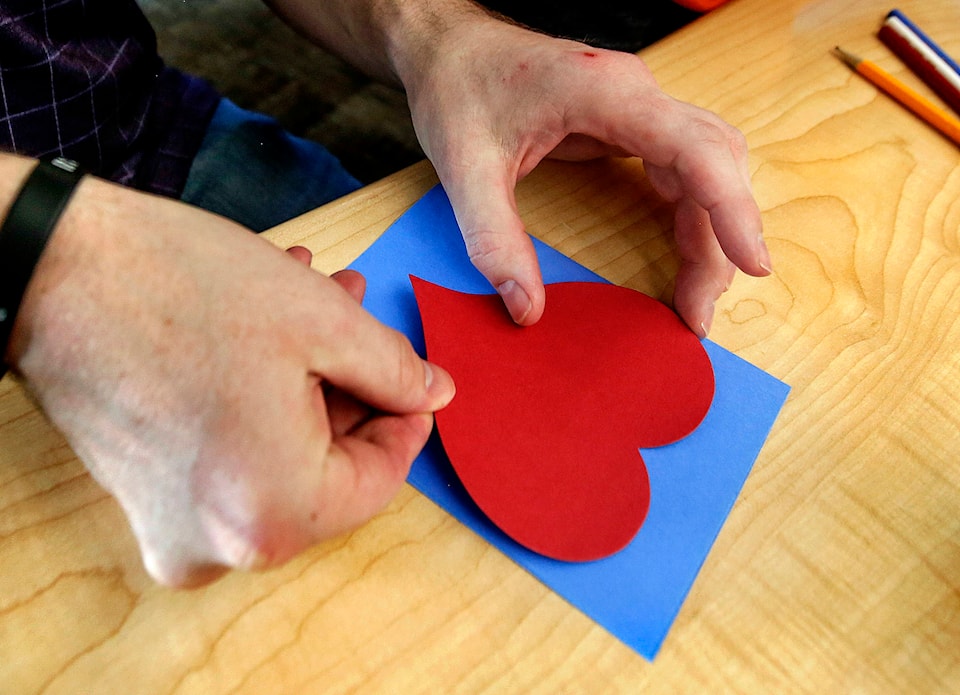Romantic love is a complex emotion thought to have ancient roots in human evolution, and associated with the need to pair-bond in stable relationships.
Through songs, poems, diaries, journals, cards and artwork, love is celebrated for its ability to send both lover and beloved into the enthralment of passion, whether the feelings are lasting or as ephemeral as love letters on the sand.
But the practice of sending keepsake love messages began around the end of the 18th century. In 1913, Hallmark produced the first commercial Valentine’s Day cards.
Valentine’s Day is now entrenched as a day for sending and receiving messages of love to our partners, parents, children and close friends.
Evolving research in the neurosciences and psychology underscores the value and benefit of these messages, especially if they are handwritten, for sender and receiver alike.
The sender may, however, underestimate the value of these handmade messages. We need to be reminded of the important role they play on Valentine’s Day — not only to enhance relationships among people of all ages, but to help children become empowered and inspired through language, literacy and the power of the pen across time and space.
Importantly, the happiness outcomes of expressing gratitude accrue to those who write by hand. Writing by hand creates neurocircuitry to the brain that typing does not.
The hand-brain complex lays down neuro-pathways when writing messages to those we care for, creating meaning and memory, and triggering the release of dopamine in the brain through the neurotransmission of the feel-good sensation of writing words of love and gratitude.
Writing cards, notes and love letters carve these pathways more deeply, over time, creating embodied cognition and contributing incrementally to a sense of well-being and happiness.
Psychology research time and again underscores the importance of and the connections between happiness, gratitude, an overall sense of well-being and strong relationships with others.
Modern technology can do the handwriting for you and instantly send out customized messages on your behalf. Remember, however, that while the receiver might enjoy the message, you have cheated only yourself by not engaging the hand-brain complex that lies at the heart of the beneficial effects of handwriting. Emails don’t count, either.
What educators call fluency of hand — competency in fluent writing — is realized with connected script or cursive handwriting. Cursive needs to be taught explicitly and directly, starting at a young age, with plenty of opportunities for mindful practice and purposeful production.
The brain can only juggle so many competing demands in working memory. Automatizing handwriting offloads the cognitive demands of handwriting to long-term memory. In turn, this unleashes the capacity for constructing the messages we want to convey.
An apt analogy for the importance of developing fluency of hand can be found in any of the performing arts such as ice dancing.
Automaticity and fluidity of movement and technique in the perfection of execution allowed gold-medal Olympians Tessa Virtue and Scott Moir to give themselves over to the interpretation, musicality and creative storytelling that touches, connects and enraptures audiences.
All are drawn into the passion, romance and raw emotion of their exquisite telling of Christian and Satine’s impossible love destined to end in tragedy as it unfolds to a medley from Moulin Rouge.
Like the foundational skills of skating and dance movement, cursive hand is not an end in itself, but rather a way of giving children tools of self expression, agency, connection and identity construction.
Their messages of love and friendship are reflections of the particular life experiences they draw on, and the particular words they own and choose in their quest to convey something of themselves to a listening world beyond themselves. Even young kids have the power to do this.
Valentine’s Day can be one of many opportunities for children of all ages to become more deeply engaged — more often — in literacy through authentic everyday communication.
Writing cards and letters is motivating and fosters a sense of relationship, connection and well-being through literacy.
On Valentine’s Day, parents could take the opportunity to write letters or cards to family members or close friends. Older children can also be encouraged to take this moment to send a card to family members. Receiving mail is always a happy occasion for grandparents.
For younger children, crafting Valentine’s Day cards develops an array of fine motor manipulative and literacy skills that will stand them in good stead. Folding paper, scissor work, drawing and colouring and using glue sticks and glitters in preparation for writing a heartfelt message give little fingers a good work out.
Children will also develop concept information for literacy, numeracy and mathematics: an unfolded heart illustrates the idea of symmetry and is used as a symbol for love.
We own our words and our thoughts in a most profound sense. When committed to paper, our words and thoughts survive our existence, leaving unique written footprints of our having been here.
They also survive our efforts to leave behind the best of who we are for others — and thus, they contribute to the pool of well-being for everyone including, importantly, ourselves.
For our loved ones including, and perhaps especially, our children, written notes and letters in legacy formats are tangible reminders of deep connection that can be revisited anytime the soul hungers for the nourishing sustenance of a loving message.
Stories of challenge, adventure, love, hope or faith reach across time, space, language and culture and can continue to shape who we are. We lose something of ourselves if we forget these stories.
The power of the pen, the gift of language and the permanency of the written word, and the desire to commit thought to paper ensures we do not lose sight of the centrality and certainty of love in our lives and the joys of knowing what it means to love and be loved.
Hetty Roessingh is a professor at the Werklund School of Education at the University of Calgary.
